In fierce SUV competition, Ford has an Edge
Filed under: Weekly test drives, Autos
By John Gilbert
When it comes to building a new truck of any size, Ford has an unfair advantage, it seems. So when the niche-seeking 2020 Ford Edge shows up, we take notice. And there is nothing disappointing about the Edge, especially when it wears the “ST” badge, indicating sporty upgrades in performance and handling.
The Edge might be the right-sized SUV for many consumers who are willing to swap overpowering towing and hauling capacity for agility and fuel-efficiency for everyday family flexibility, without ever risking losing that off-roads advantage. For openers, look at its heritage.
Ford has given us the F-150 pickup truck, which has led the market in sales every year for nearly four decades, and that truck is all-new for 2021, while leaving the company the basic template for forging ahead. The Explorer showed up and captured the imagination of consumers who wanted truck-like durability and the newly created SUV flexibility for family hauling and became the breakthrough vehicle to start and popularize the whole SUV segment.
Ford went both ways at once from there, to build the enormous Expedition and then the even larger Excursion, while also undercutting the Explorer with the compact Escape, which came in as Ford’s smallest sized SUV and immediately became a leader among compact SUVs.
The flow of new vehicles has never abated, and the Edge fit perfectly between the Escape and Explorer, and was joined by interesting specialty SUVs like the Flex, and the subcompact EcoSport, seem to fill every possible niches in the range of segments. It would be easy to get bored with the constant increase in the sheer number of vehicles, except that every time you get a chance to climb aboard any of them, you come away impressed.
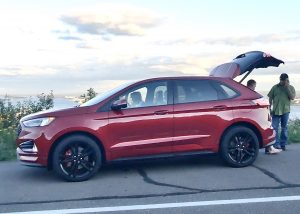
With my wife, Joan, and older son Jack, we filled the Edge ST with hiking/walking stuff and parked on Duluth’s Skyline Drive.
The 2020 Edge is built on a platform that was new for 2019 and is firm and refined and stiff enough to provide excellent handling around corners without ever tending to be harsh. For my road-test week, I cheated just a little, without even trying. The bright “Race Red” Edge that came to my driveway just up the North Shore from Duluth, Minnesota, was the ST version, which was introduced about a year ago and means this Edge had a distinct edge in sporty performance as well as appearance.
The basic Edge starts with Ford’s peppy 2.0-liter EcoBoost 4-cylinder engine and it is more than adequate for performance of the well-sized Edge. But the ST version takes a major leap forward, with the 2.7-liter EcoBoost V6 that develops 335 horsepower at 5,550 RPMs, and 380 foot-pounds of torque at 3,250 RPMs. That’s 90 horsepower and 105 foot-pounds more than the EcoBoost 4.
Light to medium trailer towing for camping or a fishing boat is no problem, and the 8-speed automatic transmission seamlessly finds the right gear regardless of load. If it doesn’t, in your estimation, you can simply click the shift paddles to up or down shift.
That makes the Edge ST about the most potent way to haul around a family of five as you can imagine, and once you climb into that attractively stitched leather bucket driver’s seat, your first objective is to start up from a stop without giving a dose of whiplash to the four other occupants. The Edge ST is sort of a race-car in compact SUV form, and while the base engine is adequate, the 2.7 twin-turbo is a rocket.
The color is up to the task of announcing your arrival, and the 21-inch black alloy wheels and performance tires set off the styling further. The blacked-in grille and the front styling with its faired-in headlights and foglights also are projected, to coin a phrase, at both usefulness and style. Read more
Symbol of luxury, Avalon gets TRD spark
Filed under: Weekly test drives, Autos
By John Gilbert
We can appreciate Toyota’s efforts to lift up some previously-boring sedans and give them a dose of performance, such as the Camry, Corolla, and even a couple of Lexus sedans, and we can celebrate the company’s producing some advanced platforms and even new engines as well as major alterations in its hybrid systems.
Throughout the corporate wide renovations, though, we could all take comfort in knowing there will always be an Avalon.
The Avalon has always been an interesting sedan, a stretched version of the popular Camry midsize car, but always loaded up with luxury features. In its lifetime, I always had the theory that since Toyota spun off Lexus as a separate brand for luxury versions of various Toyotas, the company’s preferred progression for customers was to start off with a Corolla, and after a couple of them, move up to a midsize Camry, and after a couple of them, move on into the Lexus brand for something a little more expressive.
Along the way, however, some Toyota customers who loved their mainstream Camrys, decided it might be a bit pretentious to have the neighbors drive by and see a Lexus in their driveway. For those folks, the Avalon was the perfect vehicle. Longer and roomier than the Camry, and with a lot of Lexus-like creature features, the Avalon was there for them, at the top of the Toyota car list.
So we can excuse Toyota for allowing the Avalon to remain constant, naturally tweaking it here and there with interior plushness and upgrading the exterior design now and then. But new chairman Akio Toyoda needn’t include the Avalon in the performance swath covering some of the other models.
And then a new 2020 Avalon was delivered to my house in Duluth, Minnesota, and to my surprise, bordering on shock, I found the stunning red — Supersonic Red, thank you — Avalon had the letters “TRD” emblazoned on the rear deck. TRD stands for Toyota Racing Division, and it gained its popularity for creating some pretty incredible off-road versions of Toyota’s Tundra and Tacoma pickup trucks. When Toyota moved into NASCAR racing with some totally illogical Camry models — front-engine V8s with rear-wheel drive, neither of which exist in the Toyota line — TRD expanded its reach. Read more
Alfa gives Stelvio a little dose of Formula 1 spirit
Filed under: Weekly test drives, Autos
By John Gilbert
If you owned an Alfa Romeo Stelvio, there would be several ways to point out that you are supremely lucky.
That’s the first indication, because you’re lucky enough to be driving this specialty SUV, which is one of the best-driving and most satisfying vehicles — cars, sports cars, trucks or SUVs — in the world.
Another good luck symbol is the neat little 4-leaf clover emblazoned on the flanks. That stands for Quadrifoglio, which means it is the hot one of the bunch, with all-wheel drive and perhaps the most sophisticated engine put under the hood of any production vehicle.
A third indication of your good fortune is that you might have accumulated a good fortune, in business or whatever your job might be, because you’ve made enough money to be able to afford the sticker price on the Alfa Romeo Stelvio — a cool $96,540 for my week-long test-drive Stelvio.
No, you don’t have to spend that much on the high-end Stelvio. which comes for far less with the base engine, but if you’ve got it, what could be more fun than to spend a chunk of it to get such a vehicle equipped with the 2.9-liter V6 designed and hand-built by Ferrari’s Formula 1 engineers? Think about all the overpowered sporty cars and trucks that have engines up and over 6 liters in displacement just to get enough power to satisfy their buyers. Yet, with the right technology, and engineering brilliance, the comparatively tiny 2.9 liters of displacement can be designed and perfected to produce 505 horsepower and 443 foot-pounds of torque.
Your neighborhood hot-rodder might be able to tweak any engine into providing extra power, but this is a whole ‘nother plateau. With all the trick parts at their disposal, the same engineering staff that puts the engines in the Formula 1 race cars driven by Sebastian Vettel and Charles Leclerc on satellite TV most early Sunday mornings was given a challenge by the late and charismatic leader, Sergio Marchione. As the head man at Fiat, and thus Fiat Chrysler Automobiles, Marchione had orchestrated the design and building of the Alfa Romeo Giulia, a beautiful car with near-perfect handling. Because Fiat not only owns Chrysler, Jeep, Alfa Romeo, and Ferrari, he went directly to Ferrari’s Formula 1 engineers and told them he needed an engine that would be as special as the Giulia’s design, because that would be the car that would help ease Alfa Romeo back into the U.S. market.
Once built, Alfa also offers the car with an outstanding 2.0-liter 4-cylinder, designed by Chrysler engineers, and allowing the Giulia outstanding performance for about $30,000 less. That’s the way I would buy the car, because it is quick, has the same superb handling, and meets the requirements of Marchione’s demands. But once you drive the Giulia with the hot engine, you will be spoiled. This Sunday, the Formula 1 tour goes to Spain, and while Vettel is having a tough year, and Leclerc is proving to be a young star in the making, we can only marvel at the incredible power that makes F1 cars the swiftest and most exciting form of motorsports on the planet.
And while there is always something about driving an Alfa that causes a smile to cross your face, the company proved that it is not an insult to humanity to try to do the same thing with an SUV. The Stelvio appeared as if by magic, like a tall and roomy Giulia wagon, and with the 2.0 twin-turbocharged V6, it flies around corners and teaches you to always pay attention to your gauges. That’s even more of a requirement if you have the 2.0 V6. At least a dozen times I found myself glancing down and saying, “Oops, I can’t be going that fast here ion town.” The car requires close monitoring, because that engine wants to go.
The fact that the Stelvio is an SUV, with more clearance, and the seemingly incongruous ability to do a little light off-roading, you have these mode controls that you can switch from normal driving to sport, track, and track-plus, and you can click a different button and the low murmur of that engine suddenly becomes not-low anymore, but roaring with the urgency and intensity of a race-car engine. It is not sound, so much as refined mechanical music. Read more
2020 Sonata: Sexy look, comfort, and 47 mpg!
Filed under: Weekly test drives, Autos, Uncategorized
By John Gilbert
As someone who has been test-driving and reporting on new vehicles for something like 50 years, I have established a few techniques to prove my own objectivity to myself. And there’s always room for new tricks, which I learned by driving the totally redesigned and seductive 2020 Hyundai Sonata.
The precise moment when Hyundai lifted the South Korean auto industry from mediocrity to elite status was when the 2011 Sonata was introduced. It had been a mediocre midsize car with a great warranty, but, inspired by a stinging rejection of its new engine by prospective partners Chrysler and Mitsubishi, Hyundai went back to a clean sheet and focused on building an all new 2.4-liter 4 cylinder.
The engine was to be housed in a dramatically restyled car, and both partners were surprised how quickly Hyundai built such an impressive engine from scratch. Both Chrysler and Mitsubishi still use variations of that 2.4 engine in some of their vehicles.. For its own Sonata, Hyundai engineers also designed an intricate but impressive direct fuel-injection system, and, while they were at it, designed and built a lighter and more efficient 6- speed automatic transmission.
The total package, from exterior design to engine, transmission and suspension, put the car and the company on an entirely new plateau, from which it has never looked back from that 2011 model year breakthrough. Since then, Hyundai has developed and improved its array of impressive SUVs, compacts and even luxury cars, transforming its new-found technology through its entire engine line.
But the Sonata remains the heart and soul of the company. Which brings us to the 2020 Sonata, a car that is another complete surprise.
As the world turns to SUVs, Hyundai seems to believe SUV buyers may turn back to sedans, once their SUV is parked in the driveway. And without question, the 2020 Sonata could turn a lot of heads and desires back to the sedan world.
The first time I saw one, it was from the rear corner and I thought it was a new Mercedes 5-door-coupe model. Then I walked around to the front and was surprised to see the stylized Hyundai “H” badge on the grille.
It took a while, but we finally got to spend a week with a 2020 Hyundai Sonata Limited a few weeks ago, and we enjoyed its looks and its agility and surprising power on the hills of Duluth, Minnesota. And when the idea hit us, we decided to drive the Sonata from Duluth over to Central Minnesota to watch the Trans-Am road race at Brainerd International Raceway, and drive back after the race. On that trip, the Sonata provoked a previously never-done move by me.
Often, when I think I haven’t given a car a fair test of highway driving, I’ll zero the odometer and get a fresh, highway-only calculation.
But the trip odometer on the Sonata had shown a figure I thought was absurdly high, so for the first time, I zeroed it to bring it back to reality. After all, it had the exceptional but small 1.6-liter Turbo engine, and the Sonata is a big, Accord-Camry-Mazda6-sized car to haul around. My mistake. After zeroing it, we drove east along Hwy. 210 and my wife, Joan, took a long turn behind the wheel. That let me relax in the passenger bucket and examine all the features of the redesigned dash, with its long, horizontal information screen in the middle of the dash. My newly reset trip-odometer now read: 46.7 miles per gallon!
I guess my earlier assumption was not just wrong, but I reset it twice to recalculate, and our highest figure attained was 47.1 mpg. Astonishing! That’s hybrid, or diesel, territory, and many of them can’t get that much.

Neat gauge-work transposes rear-facing video to replace either the tach, for left, or speedometer, for right turns,. Note the 44.1 mpg, too.
There were other neat things to notice. For one, the instrument cluster has a large tachometer on the left and an equally large speedometer on the right, and you can switch to all sorts of other information to be injected within them. But one surprise is something Hyundai borrowed from its exceptional Palisade SUV. When you hit the left turn signal, the tach is replaced by a rear-facing video of all there is to see behind you on your left; turn right and the speedometer disappears for a moment to show you any oncoming vehicles on your right. It’s also handy when you’re maneuvering in your own driveway, just to bolster the rear-view camera view that shows both what’s behind you and a 360-degree top-down video of all surroundings. Read more



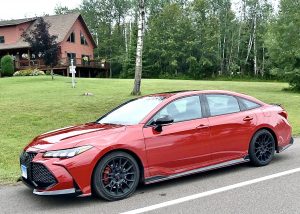
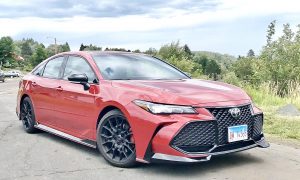
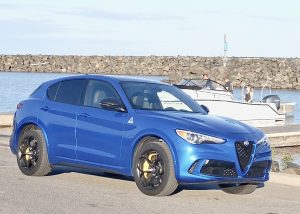


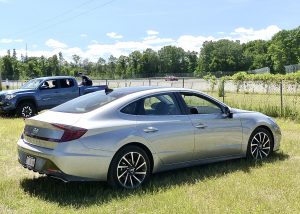
 John Gilbert is a lifetime Minnesotan and career journalist, specializing in cars and sports during and since spending 30 years at the Minneapolis Tribune, now the Star Tribune. More recently, he has continued translating the high-tech world of autos and sharing his passionate insights as a freelance writer/photographer/broadcaster. A member of the prestigious North American Car and Truck of the Year jury since 1993. John can be heard Monday-Friday from 9-11am on 610 KDAL(www.kdal610.com) on the "John Gilbert Show," and writes a column in the Duluth Reader.
John Gilbert is a lifetime Minnesotan and career journalist, specializing in cars and sports during and since spending 30 years at the Minneapolis Tribune, now the Star Tribune. More recently, he has continued translating the high-tech world of autos and sharing his passionate insights as a freelance writer/photographer/broadcaster. A member of the prestigious North American Car and Truck of the Year jury since 1993. John can be heard Monday-Friday from 9-11am on 610 KDAL(www.kdal610.com) on the "John Gilbert Show," and writes a column in the Duluth Reader.